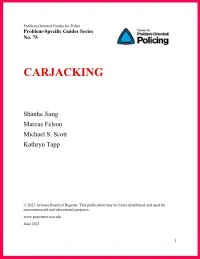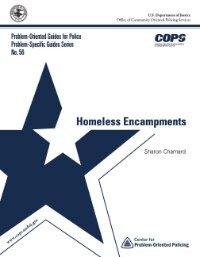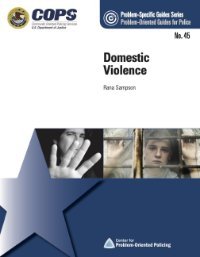By Shanhe Jiang, Marcus Felson, Michael S. Scott, and Kathryn Tapp
This guide begins by describing the problem of carjacking[1] and reviewing factors that increase its risks. It then identifies a series of questions to help you analyze your local carjacking problem. Finally, it reviews responses to the problem and what is known about these from evaluative research and police practice.
© 2023 Arizona Board of Regents. 25p.





















